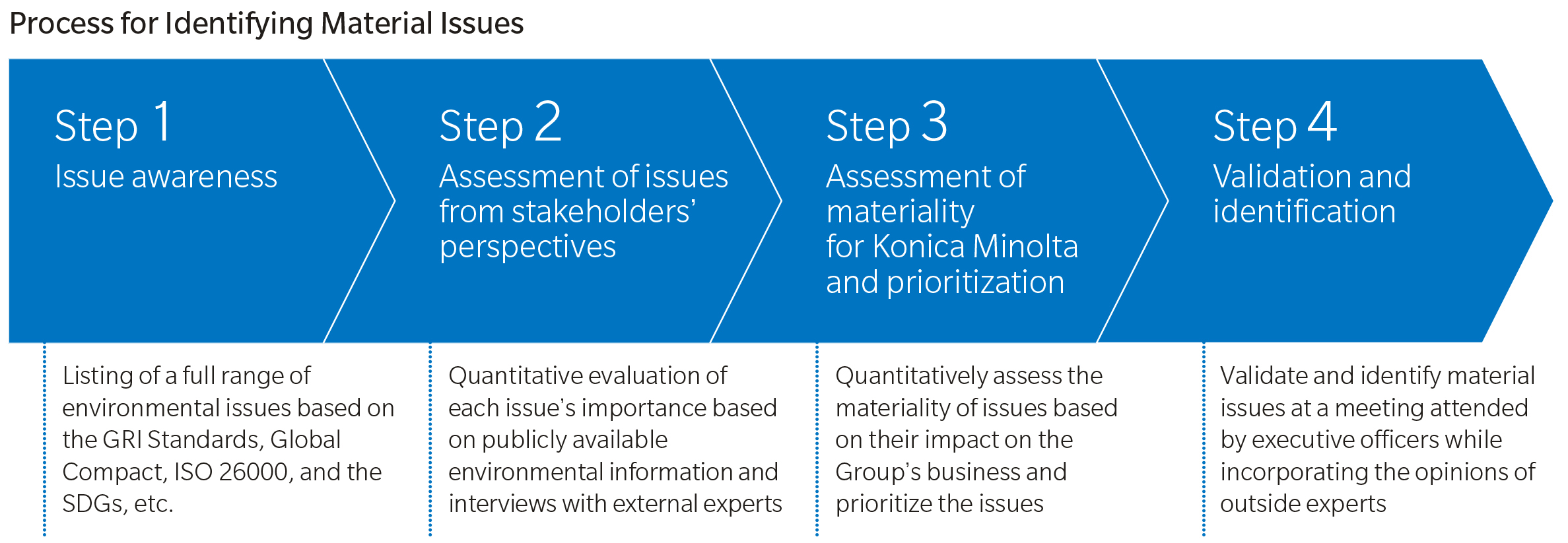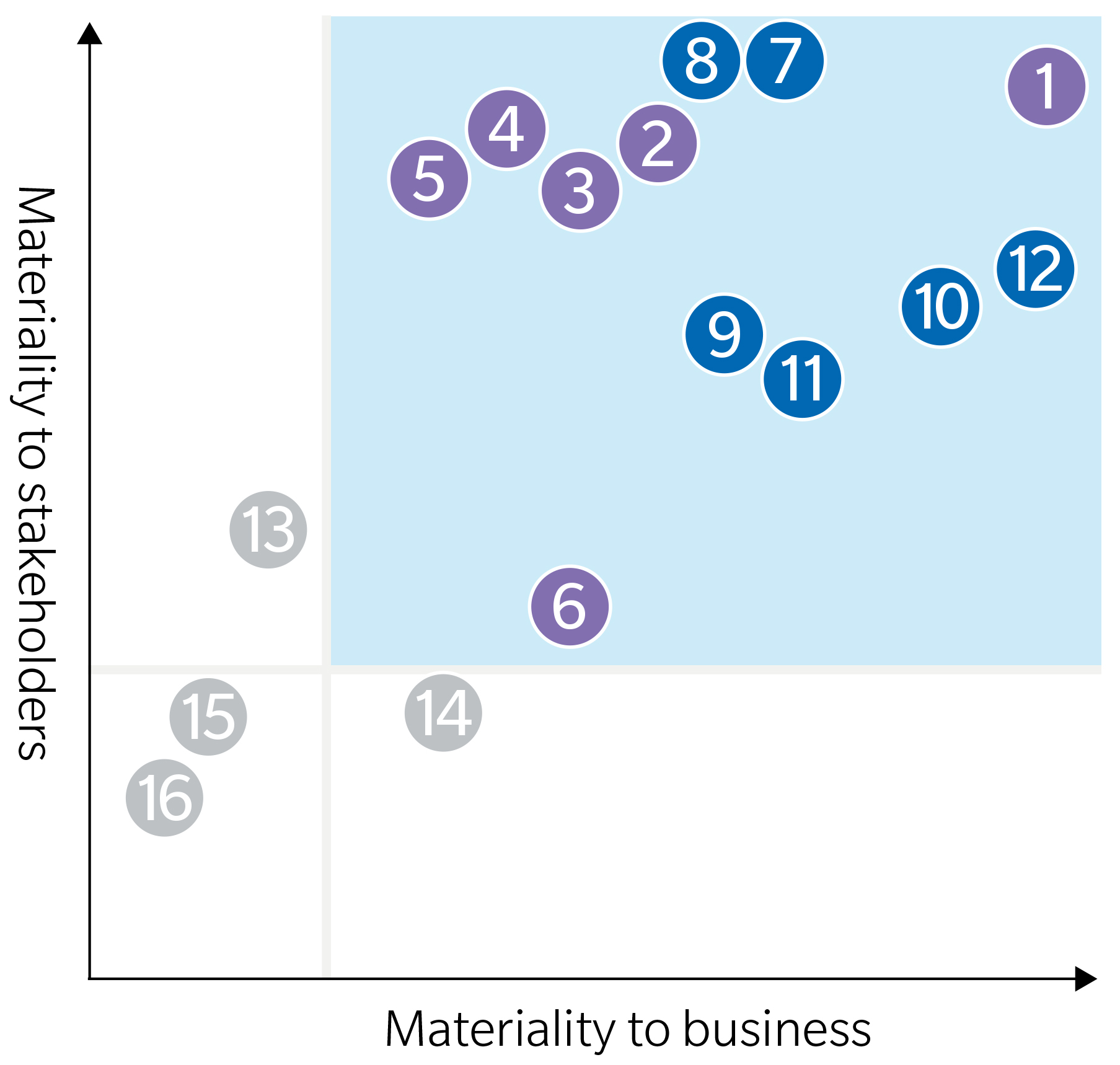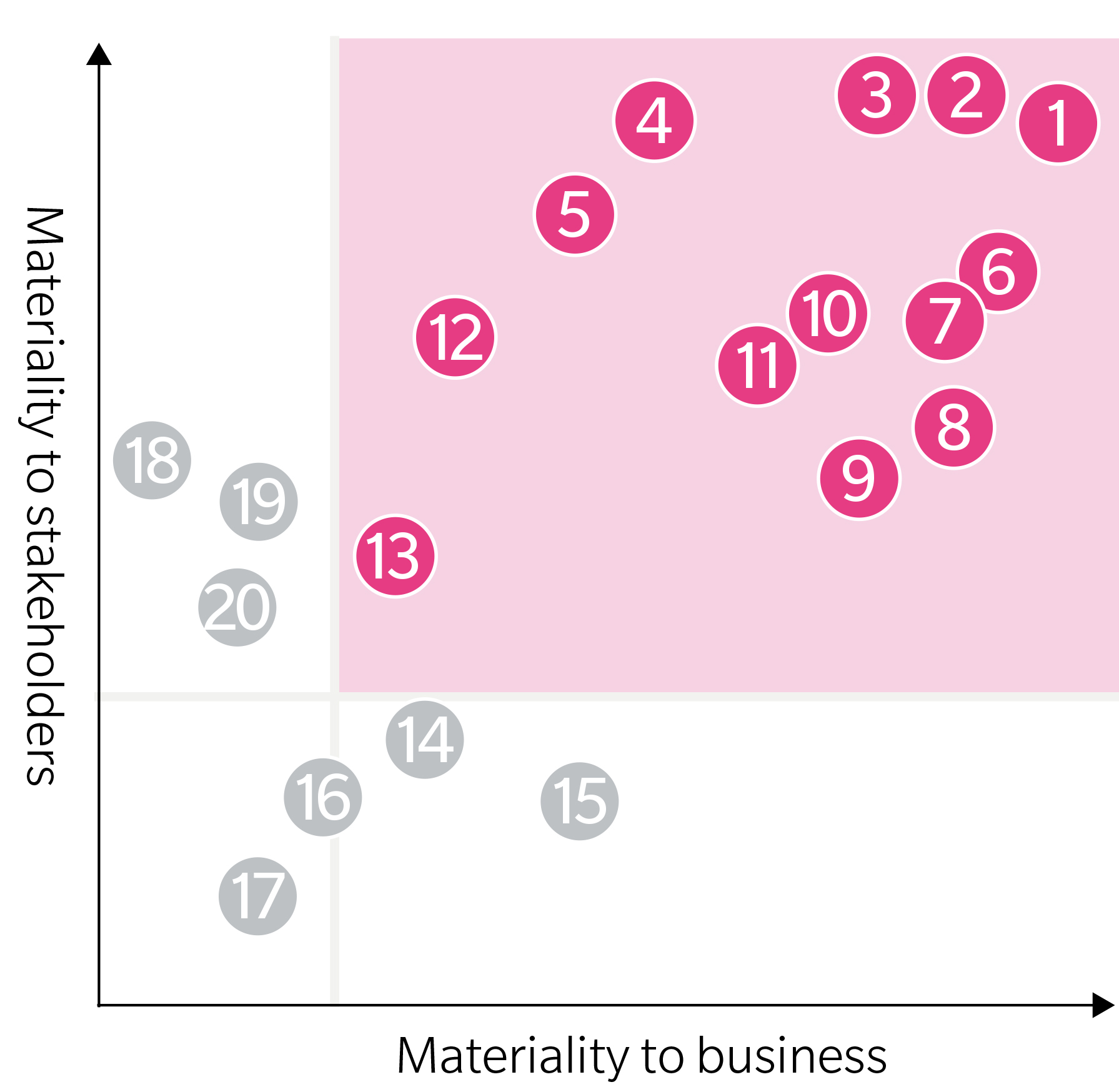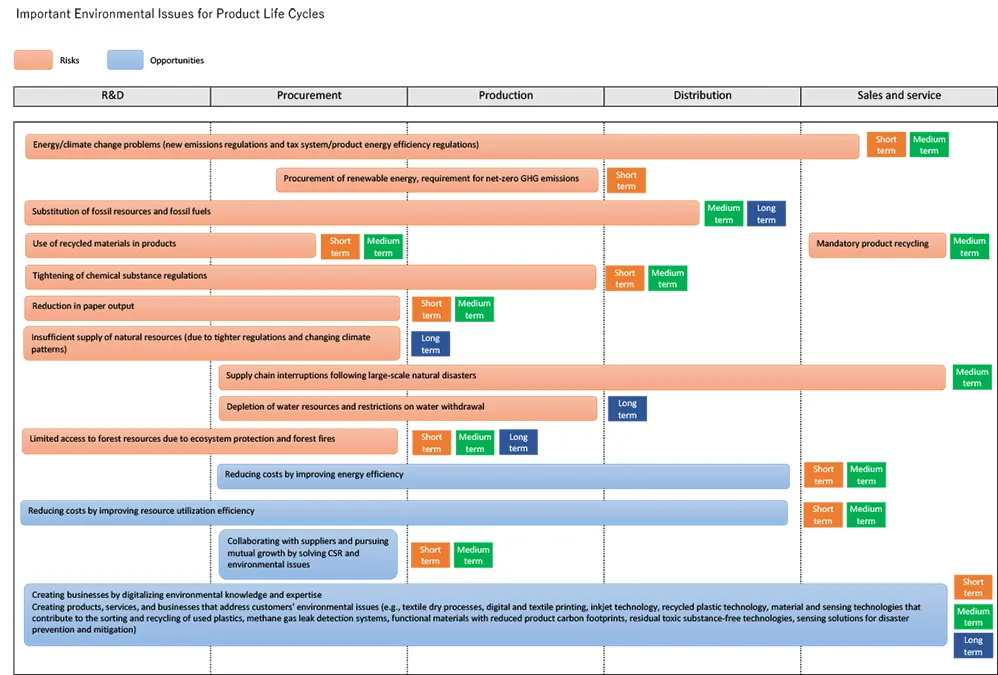Strategy
Identifying Environmental Material Issues
Environmental Targets of the Medium-Term Environmental Plan 2025
Environmental Material Issue Evaluation and Identification Process
Companies must address a wide range of environmental issues, such as climate change, resource depletion, plastic pollution, water, and biodiversity. In light of recent changes in society and the evolving business environment, Konica Minolta has identified material issues related to the environment. The Company aims to prioritize these issues and promote initiatives to help solve them while also achieving business goals. Konica Minolta has identified five material issues from the perspective of sustainability and has analyzed them in more detail — “addressing climate change,” “using limited resources effectively,” and “ensuring social safety and security (safety of chemical substances)” — to set specific measures.
To identify its material issues, the Group first compiled a comprehensive list of environmental issues by incorporating international guidelines, as well as various stakeholder requirements. It then identified key issues based on their importance to stakeholders and their relevance to the business. To determine the importance of each issue to the business, impacts were quantitatively evaluated using five levels. Risk analysis was used to calculate the potential profit loss if a certain risk materialized, as well as the potential profit gain if a potential opportunity was seized. In determining the importance of each issue, the Group maintained objectivity by seeking the opinions of outside experts. The Group Environmental Officer, who chairs the Group Environmental Promotion Committee, verified this evaluation process and the resulting material environmental issues before identifying those that should be prioritized.

Identifying Material Issues from Both Risks and Opportunities
When evaluating and identifying material issues related to the environment, Konica Minolta identified various environmental factors related to its business in terms of both risks and opportunities. Based on these findings, material issues were selected where solutions can lead to business growth. The Company reviews each material issue annually to ensure the issues selected and related plans are appropriate.
Through this process, goals for reinforcing the business are matched with environmental targets. The plan then becomes a commitment for both top management and the entire organization, resulting in effective environmental management.
【Opportunities for Each Material Issue】

* Items marked in purple are reduction beyond scope of Konica Minolta responsibility and items marked in blue are reduction for which Konica Minolta is responsible.
| Materiality Items (Opportunity) | |
|---|---|
| 1 | Digital solutions that transform the supply chains of the printing and apparel industries |
| 2 | Transform customer manufacturing processes with inkjet technology |
| 3 | Sensing technology that contributes to the sorting and recycling of used plastics |
| 4 | Ecosystem that helps companies solve environmental issues and create new innovations |
| 5 | Promote energy reduction and renewable energy with suppliers |
| 6 | Expand business through gas monitoring to prevent GHG leaks |
| 7 | Early introduction of renewable energy |
| 8 | Reduce costs through energy reduction |
| 9 | Develop new markets and strengthen competitiveness through recovery and effective utilization of Konica Minolta products |
| 10 | Provide materials, parts, and product services with a low carbon footprint |
| 11 | Utilize renewable and circulated resources |
| 12 | Reduce energy and paper consumption through work style reforms in offices and other locations |
| 13 | Gain stakeholder support through biodiversity initiatives |
| 14 | Contribute to water infrastructure, help to counter obsolescence, and support monitoring |
| 15 | Create technologies that contribute to use of renewable energy and new energy |
| 16 | Create technologies that contribute to ecosystem recovery |
【Risks for Each Material Issue】

| Materiality Items (Risks) | |
|---|---|
| 1 | Ban on substances that contaminate ecosystems and damage the health of people (response to stricter regulation on chemical substances) |
| 2 | Rising manufacturing costs due to new emissions regulations, tax policies, rising energy prices, and fossil fuel substitution |
| 3 | Delay in introduction of renewable energy |
| 4 | Inadequate progress toward the 1.5°C and net zero targets |
| 5 | Delayed introduction of internal carbon pricing and linked officer compensation |
| 6 | Delayed provision and disclosure of carbon footprint and footprint reduction |
| 7 | Declining competitiveness due to unsustainable resource use, insufficient supply of natural resources, and restricted access to forest resources |
| 8 | Supply chain interruptions due to large-scale natural disasters |
| 9 | Inadequate progress in decarbonizing Konica Minolta components and improving product energy efficiency |
| 10 | Delay in supporting products and components for the circular economy |
| 11 | Delay in supporting containers and packaging for the circular economy |
| 12 | Decline in stakeholder assessment due to lack of support for non-financial disclosure |
| 13 | Costs incurred for measures to prevent soil contamination |
| 14 | Depletion of resources (precious metals) |
| 15 | Delays or stoppages in procurement and production due to depletion of water resources and water risks |
| 16 | Virtual water becoming a cost factor |
| 17 | Impact of ecosystem destruction due to manufacturing and use of raw materials |
| 18 | Air pollution |
| 19 | Water contamination |
| 20 | Legal compliance and management of waste |
Important Environmental Issues for Product Life Cycles
Konica Minolta identifies material environmental issues, including risks and opportunities, throughout its value chains. These issues need to be specifically addressed by the responsible departments within each business segment, including product planning and development, procurement and production, as well as sales and service. The Group also determines when business risks and opportunities related to important environmental issues are likely to materialize, based on short, medium, and long-term perspectives.
Target Setting Process
Click here for information on the target-setting process
Targets and Results
Click here for information on targets and results



